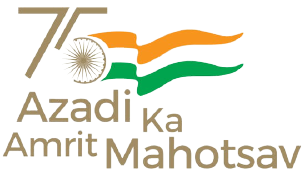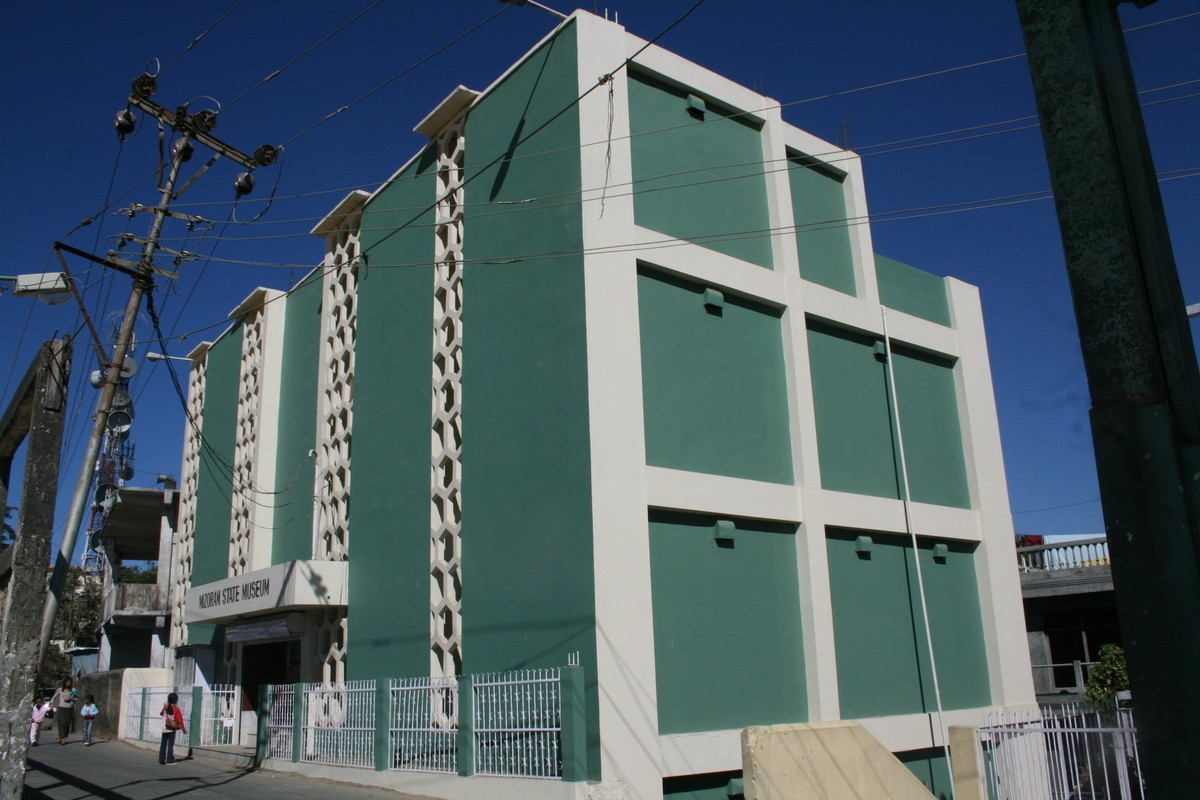
The Mizoram State Museum was established in April, 1977. The Museum is headed by the Museum Curator assisted by Technical Assistant, Taxidermist, Photographer, Museum Assistant, Counter Attendant and Gallery Attendants. There are four clerical staff as well. The State Museum started functions in a rented house. It was on July 1990 that a Museum Building was inaugurated and occupied. The Museum galleries are modernized and improved with the assistance of Indian Museum, Kolkata. The entire galleries have been improved and modernized by 2008. The State Museum located at Bawlhmun, Macdonald Hill, Zarkawt.
Where to find
The State museum is within 200 meters from the main road traversing Aizawl City. One can reach either from Zarkawt Traffic point or Chandmary Church point uphill. On the left of the State Museum stands Missionary Tomb and on the right the Teachers' Inn. The main entry is on the upper road facing Govt. Higher Secondary School playground. The entry the down road from the behind the building is for administrative personnel and those who come for official works.
How to Enter
Entry into Mizoram State Museum is governed by simple set of rules. Adjacent to the playground, facing west is the main entrance. At the entrance there is Reception room with two ticket counters. Obtain your admission for Rs. 20/-(for adult) and Rs. 10/-(for children). School children are allowed 50% concession on an educational trip. However the Curator will have to be informed well in advance for necessary arrangement. Photography inside galleriesis not allowed except the prior permission of the Curator. Familiarized your-self with the rules prominently placed at the entrance. When you step inside, at your right there is one section of gallery and on the left there is another section of Art Gallery. One floor down, you find another section of gallery. But if you choose to go upstairs there are two galleries in two consecutive floors plus terrace with Archaeological objects. Exit is from the same entry.
Visiting Hours:
Monday : 1:00 pm - 4:00 pm (IST) (in summer)
1:00 pm - 3:30 pm (IST) (in winter)
Tuesday - Friday : 10:00 am - 4:00 pm (IST) (in summer)
10:00 am - 3:30 pm (IST) (in winter)
Saturday : 10:00 am - 2:00 pm (IST)
* Sunday and Government Holiday closed
What objects are on display
The Mizoram State Museum is essentially an ethnographic museum with multipurpose collections on display. There are five galleries -
Textile Gallery
The textile gallery displays textiles of different communities of Mizos, showing the development of textiles right from the earliest known wear of fibre arts called Siapsuap for women and Hnawkhal for men to the present day traditional costumes. Distinctive bed cloth like Pawnpui, Pawnpui te and Puankawp are on display and models of full size men and women with festive dresses enrich the gallery.

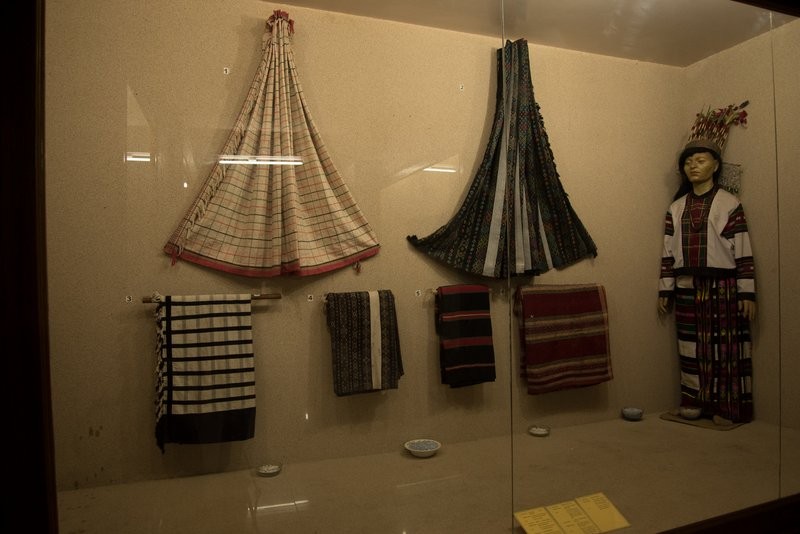
Ethnology Gallery
This gallery is represented by various artifacts of the Mizos such as distinctive traditional musical instruments, weaponry, hunting implements, domestic utensils, materials used for brewing and drinking local rice beer, cotton processing materials, traditional fibre arts, cane and bamboo works, other household materials etc which demonstrate every day life of the Mizo people.
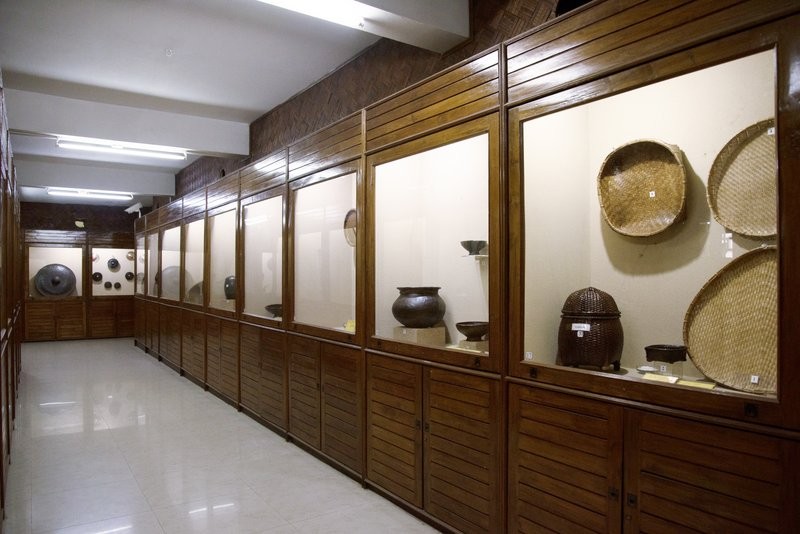
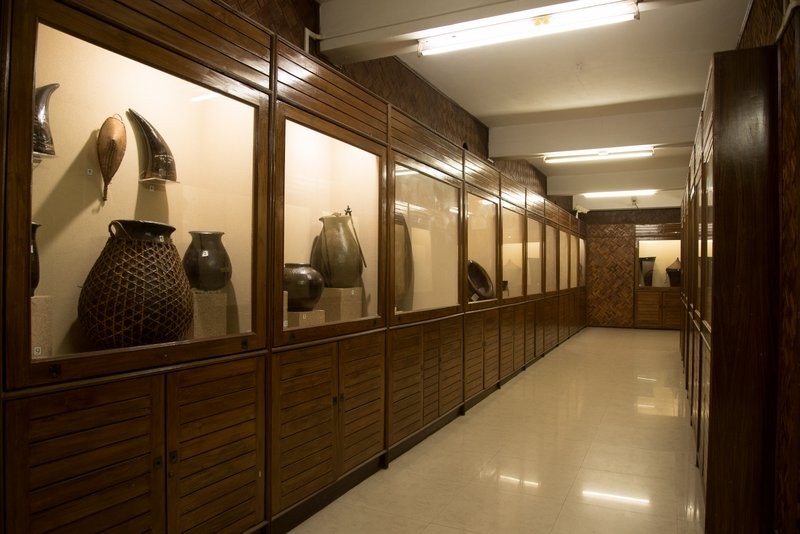
History Gallery
The History gallery depicts the history of the Mizos with the help of photographs and paintingsof some prominent persons, historical places and also stone implements and other materials of historical importance and rare mineral and mining are on display.
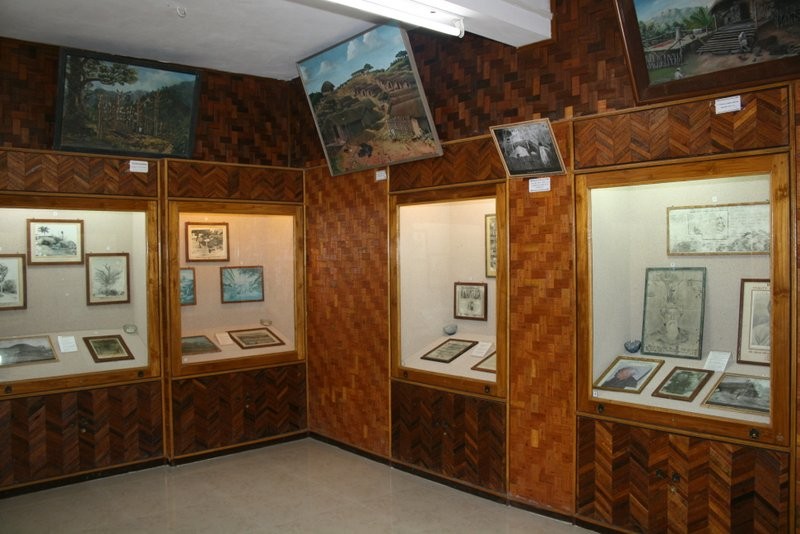
Anthropology
The traditions and culture of the Mizos can be seen from the material culture exhibited in this gallery. There are on display various models of household materials, mostly made of cane and bamboo, different kinds of headgears and ornaments, smoking pipes, materials used for felicitating successful warriors, models of Zawlbuk (bachelors’ dormitory), Ordinary house, Chief’s house and model of Daibawl sacrifice.
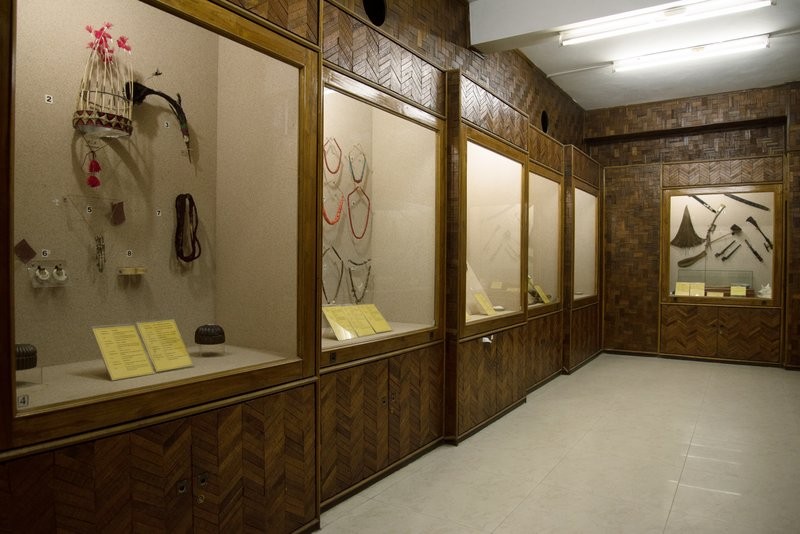
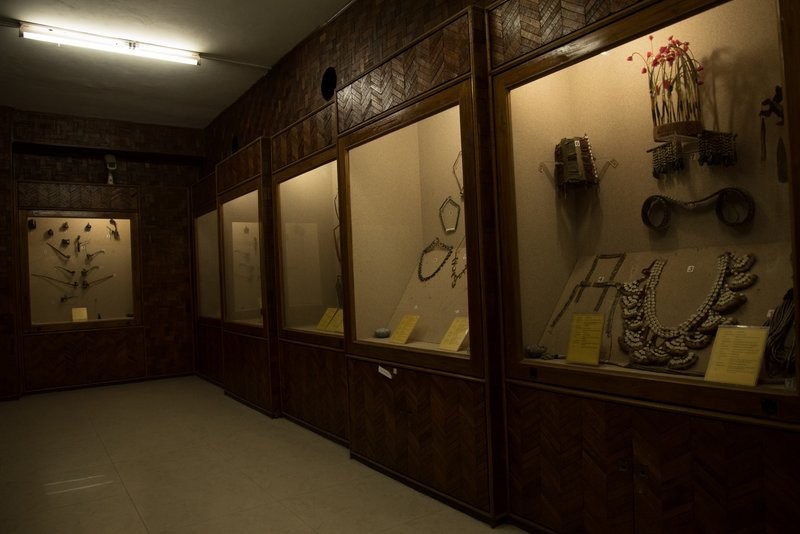
Zoology Gallery
This natural history gallery introduces the visitors various traps and snares, variety of stuffed animals, birds, reptiles etc under wet and dry preservation including skulls of wild and domesticated animals.
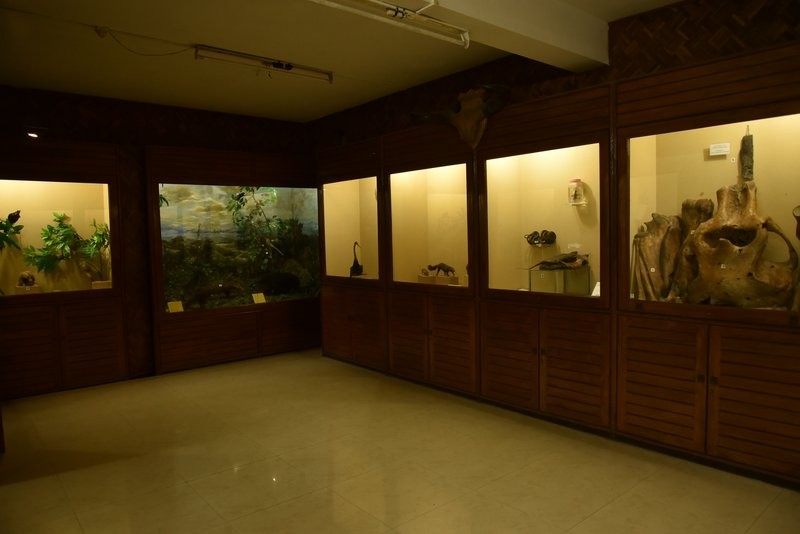
Archaeology Terrace
Both sides of the top floor terrace is the exhibit of few Archeological specimens excavated and found by chance.

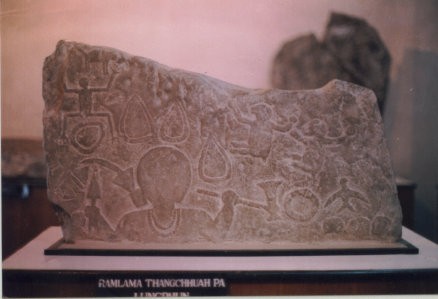
Rules and Regulations
- Public visitors should make their Entry and Exit only through the main gate
- Public visitors are not allowed to moved beyond the Museum galleries
- Visitors are not allowed to carry any kind of arms and ammunitions into the museum galleries.
- Visitors are not allowed to carry any materials such as Bags, Sticks etc. into the Museum Galleries without prior permission.
- Smoking or spitting inside the Museum galleries is strictly prohibited.
- Drunken persons are prohibited from the Entry into the Museum
- Photography in the galleries will be allowed only on permission
- Guide will be available on request
- Nominal charges of entry fee of Rs. 10.00 for Children , Rs. 20.00 for Adults will be Relied and 50% concession for School children accompanied by teachers. Free entry for old age over 60 years of age.
The top floor gallery is devoted to Textiles. Among the traditional costumes you will find the dresses of different kinds of Mizo, full size-model of man and woman with festive dresses, Pawnpui (Mizo Blanket made of raw cotton), Hmaram (early clothes of indigo dye) and many more are on display.
The first floor from the entrance is devoted to ethnological gallery. The material culture of the Mizo is represented in this gallery by traditional fiber art, weaponry, hunting implements, distinctive musical instruments, objects of personal adornment, domestic utensils which demonstrate the everyday life of the Mizo people. Tawlhlohpuan (never turning back) worn by a person who is supposed to fight the enemies or wild animals till death. Some ornaments like Thihna (the necklace of Mizo girls with amber or precious breads) and Vakiria (fascinating headdress for women), Thimkual (metal hair pins), and Tangkathi (the necklaces made of silver coins) enrich this gallery.
Just on the left of the entrance is devoted to History Gallery. Photograph and paintings of some prominent persons who contributed a lot to develop Mizo literature, some historical places, stone implements and archeological objects are on display
Just on the right of the entrance is devoted to Anthropology Gallery. A typical MizoZawlbuk, bachelor’s dormitory, common house and chief’s house and other domestic usage are exhibited. Ornaments like brass bangle, necklaces and different headgears are on display. You find a famous Chhingpuii’s necklace, chief Vanhnuailiana’s twin nicotine water container and legendary warrior Thawmvunga’s sword. The smoking habits of the traditional Mizo are demonstrated by Tuibur and Vaibel bamboo made smoking pipe used by women and men respectively. Tuiburum is a small gourd container used for nicotine water. Bamboo and cane were used mainly to prepare household keepsakes such as Thul, the treasure box or basket to keep valuable belongings, Emping, well knitted basket and Paikawng loose knitted basket used for carrying jhum product.
Down floor from the entrance is devoted to Natural History Gallery. The forest clad mountains of Mizoram are very rich having a great variety of flora and fauna. The wild animals used to be numerous in the less populated areas of the state. Tiger, leopard, wild pig, sloth bear, barking deer are found in the region. The gallery introduces the visitors with a number of mammals, reptilian and avian specimens, domesticated mithun, wild buffalo, different kind of deer and a number of birds.
On either side of the top floor terrace is devoted to Archeological excavation like edict of Maharaja Chandra Kirti Singh (1850 - 1886 AD), polished stone from Zamuang village, western belt of Mizoram and Lersia sharpening stone and others are exhibited.
The main functions of the Museum are mentioned below :-
1. Collection of objects
2. Documentation of objects
3. Conservation and preservation of objects
4. Development of galleries
5. Repair and renovation of the Museum building
6. Obsevation of National museum week every year in February
7. Observation of International Museum day on 18th May every year
8. Museum exhibition at various places in and outside Mizoram
9. Disseminating Museum education to the mass society
10. Publication of books on Museum
The Mizoram State Museum is well equipped with electronic equipments, furniture, chemicals for preservation and conservation of Museum objects. CCTV and fire extinguishers, modern technical decives for Museum security are installed.
Contact No – Museum Curator : 0389 - 2340936
